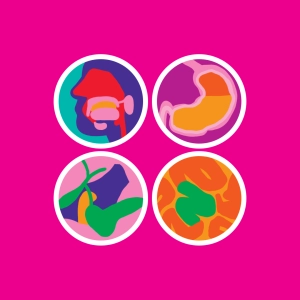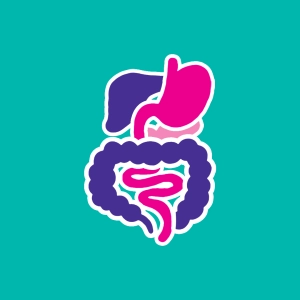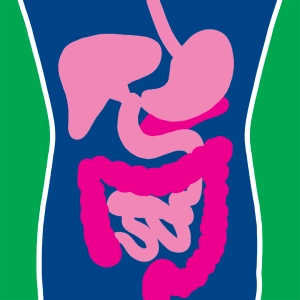 Digestion
Digestion
Our digestive system functions like a factory for the transformation of food. To what end? To get from the food the nutrients and the energy needed for metabolism. Here are the principal steps in the process:
Digestion begins in the mouth: by mastication, or chewing, the teeth and tongue crush and grind the food into mush. They are assisted by the saliva, which contains digestive enzymes.
(...)
The esophagus, by means of its contractions, forces the food bolus down into the stomach.
The stomach is a dilatable sac. It tosses around and mixes the food, and reduces it to a nearly liquid state thanks to highly acidic gastric juice.
(...)
At the level of the duodenum, two glands go into action. The gall bladder discharges bile, which emulsifies fats. The pancreas adds in enzymes that break down proteins, fats and slow sugars into simpler substances.
(...)
The small intestine also secretes some enzymes that aid in digestion. The food from this point on is in a state of small, assimilible molecules : the nutrients.
What becomes of them? They pass into the blood and lymph via a network of very small capillaries.
(...)
The processes here can last as much as ten hours. This is the average time needed, in an adult, for the food to travel the 6 meters of the intestine’s length.
(...)
Strictly speaking, digestion is now finished. All that could not be assimilated, like plant fibers, passes into the colon where the intestinal flora condenses it into excrements. These travel to the rectum, thanks to the colon’s peristaltic contractions , before being expelled.
Note that the water we drink or that is present in foods, is absorbed at the levels of the two intestines.

Discover EduMedia for free
The interactive encyclopedia that brings science and math to life in the classroom.
Over 1,000 resources





